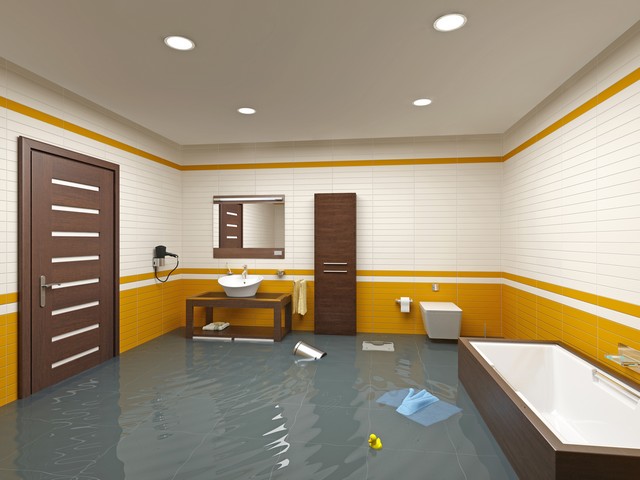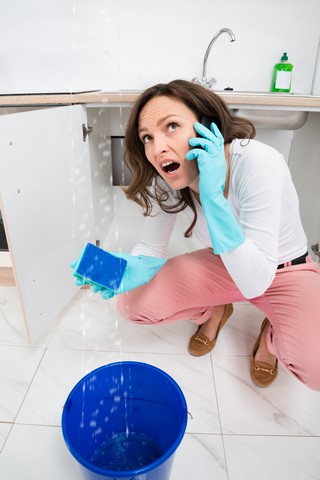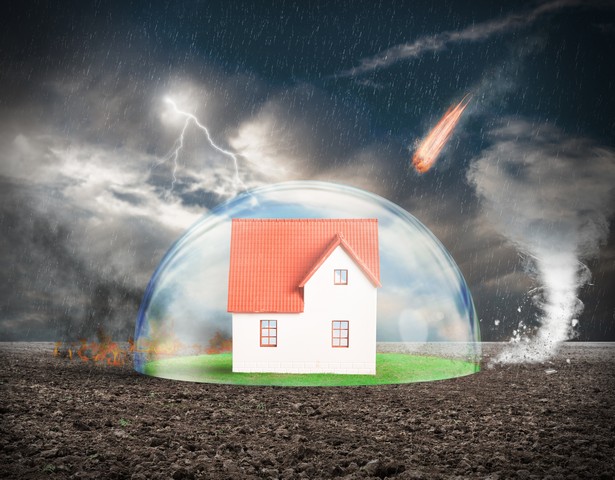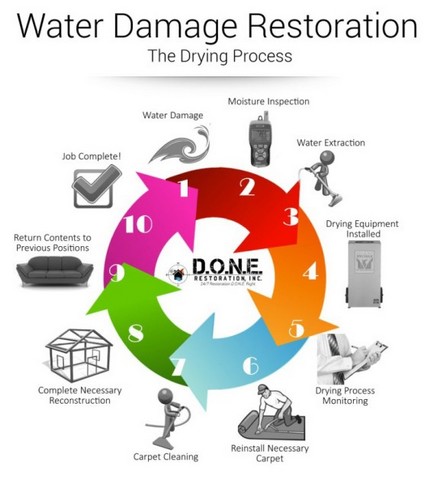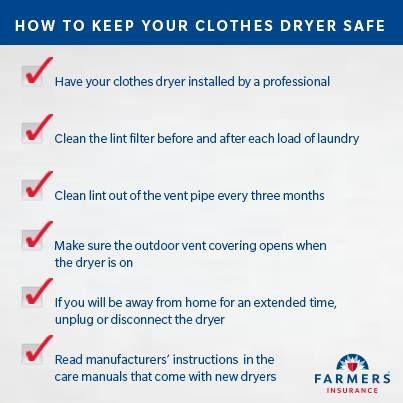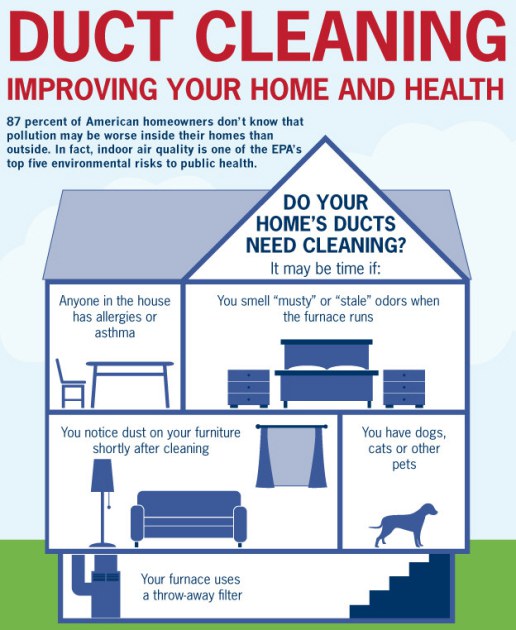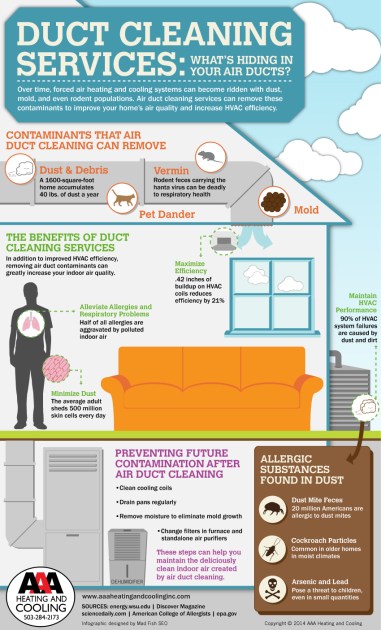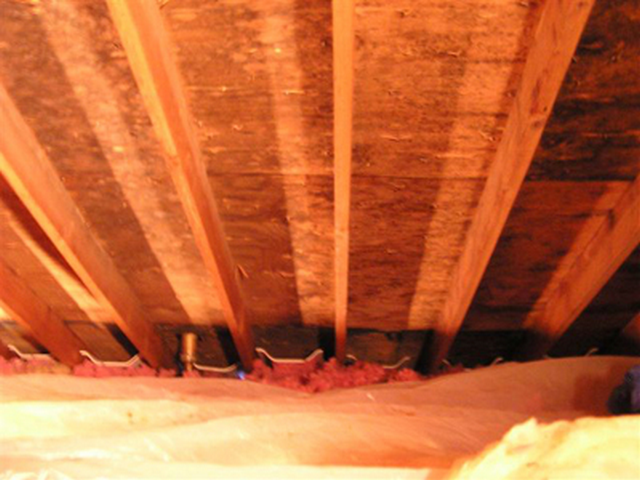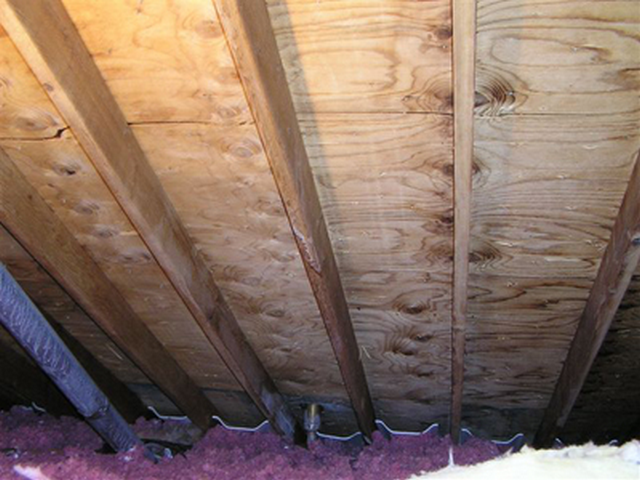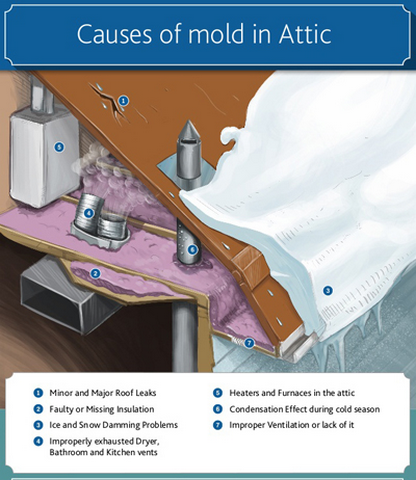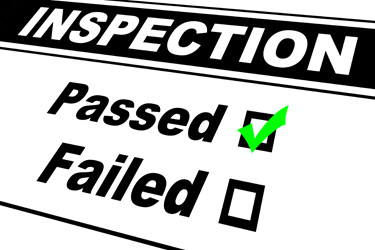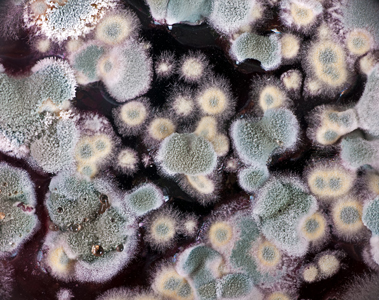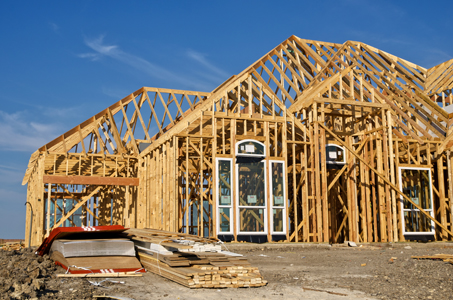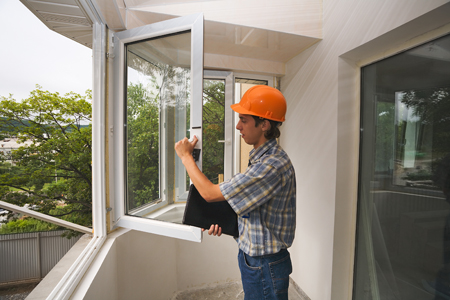
by Eric Brown | Aug 16, 2017 | Flood, Flood Clean Up, Flood CleanUp, Flood Damage Mitigation, Flood Damage Restoration, Health, Indoor Air Quality, Killing Mold, Mold Facts, Property Damage Restoration, Questions and Answers, Sewage Clean up, Sewer Backup, Stachybotrys Black Mold, Toxic Mold, Water Damage Cleanup, Water Damage Prevention, Water Damage Restoration
15 FAQs About Water Damage Restoration!

15 FAQs About Water Damage Restoration!
One of the services that Mold B Gone specializes in is water damage restoration.
In 2015, we launched our blog to help our customers in Atlanta, Georgia find answers to questions they have about mold, indoor air quality, and water damage. Over the years, we have encountered many questions about water damage. The purpose of this article is to answer some of the most common questions we encounter.
Let us know if you have further questions. Peace of mind is just a phone call away, 678-697-6267!
1. Can Water Damage Be Prevented?
There’s not a lot you can do to prevent water damage from an act of nature. Water damage from severe storms that cause over-the-ground flooding happen. But not as often as you might think.
Although flooding is a common cause, most water damage to properties is caused when indoor plumbing fails. With this in mind, the key to prevention is regular maintenance, meaning you should inspect your home or business for the following:
- Make sure all your appliances (e.g., dishwasher, clothes washer, and water heater) are in good working order. Check all water connections and hoses. Remember to do this even if you have the metal braided supply hoses.
- Check under your kitchen and bathroom sink for signs of corrosion and make sure connections are tight.
- Check the toilets in each bathroom for any signs of leaking.
- Monitor your water bills. A sudden, unexplained increase in water use can be caused by a leak.
- Finally, make sure everyone knows how and where to shut off the water to the home.
2. What Happens When Water Floods My Property?

What Happens When Water Floods My Property?
- When water contacts drywall, it sags and disintegrates. Then you’ll see paint bubbles and peeling as the water wicks up the drywall. After that, water saturates the insulation behind the drywall.
- If water dwells in your property for any length of time, wood structures begins to swell. The glue holding your particle board kitchen and bathroom cabinets dissolves, causing them to crumble. The longer the water dwells in your property, the more likely it is that the hardwood floors will buckle and warp. Wood exposed to long-term water damage rots.
- Water-soaked carpets “delaminate.” Delamination is the term for carpet that pulls away from its backing. Once this happens, the carpet is permanently ruined.
- Water damage can short-out electrical systems. This can cause fire and shock hazards and damage to electronic equipment.
3. Why Should I Call Mold B Gone?

Why Should I Call Mold B Gone?
Quickly wiping or mopping up a small spill in the middle of the floor is okay.
However, if water flooded a large portion of your home or office, it’s the water you can’t see, the water that wicks up behind the wall or under the floors, that causes problems.
These dark cavities are the perfect place for mold and mildew to grow.
Moisture meters enable us to find water you can’t see hiding in the structure.
Excess water promotes mold growth, and will also compromises the structural integrity of the materials. In addition, mold exposure presents a serious health threat to everyone in the home or business.
Finally, if the water damage comes from a contaminated source like a sewage backup, it presents an imminent health threat. If this happens, then you want to avoid contact and call us immediately.
No matter what caused the water damage, to prevent future health or structural problems, water damage restoration should always be handled by a licensed, insured, certified professional water damage restoration contractor like Mold B Gone.
4. Should I Wait Until The Insurance Adjustor Comes To My Property Before I Call You?
Please check your insurance policy. In most cases, the answer is NO. Call us as soon as you need help because most homeowner and business policies require you to do whatever you can to prevent further damage.
The first step is to stop the source of water.
The second step is to call your insurance company. Ask them if you have coverage. They will probably issue you a claim number and may give you 2 or 3 names of restoration companies to call.
Finally, after you call us, take pictures of the damage. Even though we will take pictures when we arrive, we tell our customers to take as many pictures as they can for their own peace of mind!
Once you know that we are coming, you can try to remove or separate any personal items and do what you can to remove standing water, but don’t throw anything away. Most importantly, be safe!
5. What If Your Company Is Not On The List Of Restoration Companies To Call?

What If Your Company Is Not On The List Of Restoration Companies To Call?
No problem. You don’t have to use the company the insurance company recommends. You are free to hire whoever you want.
However, you will want to take steps to properly vet the contractor you choose. As with every profession, there are good water damage restoration professionals and not so good ones.
Most reputable water damage companies have worked with the major insurance companies and are experts at dealing with adjusters and claims.
When you hire Mold B Gone and we have all the information abour your claim, we’ll communicate directly with your insurance adjuster to make the process smooth and easy for you.
6. What Is So Special About What A Certified Water Damage Contractor Does?

What Is So Special About What A Certified Water Damage Contractor Does?
- After we extract the water, we will also contain the affected area.
- We remove any non-salvageable damaged materials.
- We photo catalog every part of the damage and all damaged items.
- We spray anti-microbial solution on the affected area.
- Shop vacs and common household fans are not designed to remove enough moisture or generate enough air movement to dry your home or office completely after a flood. We use specialized, high-speed, industrial air movers and dehumidifiers. We set up the equipment in a specific pattern, creating the most efficient drying system for your property.
- While the equipment removes and controls the humidity and moisture levels in the air, we monitor the progress on a daily basis with specialized meters to measure the moisture.
- We communicate with your insurance company using the latest technology to facilitate efficient processing of your insurance claim. We’re experts at this, and we’ve helped hundreds of homeowners in Atlanta, Georgia recover quickly from water damage loss.
7. Should I Leave My Home or Business During Water Damage Restoration?
If the property damage doesn’t require a lot of reconstruction, you can stay in your home or office.
However, the equipment we use during the drying process can be noisy. It also creates a lot of air movement which may be considered as unlivable or unworkable conditions.
If the bathrooms in your office, or the kitchen in your home are a part of the damaged area, check with your insurance company for reimbursement of alternate living expenses or business continuity expenses until the restoration job is complete.
8. Why Does Mold B Gone Need Access To My Property?
Once the water is extracted and we begin the drying process, we need to monitor and control the moisture and humidity levels in the home. By doing this, we can prevent the growth of toxic mold. In addition, insurance companies require daily monitoring reports to justify your claim for damages.
We place our industrial sized equipment so it will operate as efficiently as possible according to the moisture mapping. We monitor and check the progress of every job regularly so we can make any adjustments as needed. Remember our job is to get you clean, dry and sanitized as quickly as we can. So monitoring helps us do that.
9. How Much Time Does It Take To Dry My Home or Business?
It all depends on the size and scope of the loss.
Completely drying a structure depends on the type of water damage, how bad it was, how long the water dwelled, and the type of building materials involved.
For example, concrete takes much longer to dry than wood.
In most cases, water damage to your home or business takes 2 to 3 days to dry.
However, properties exposed to water damage for a long time will take longer to dry!
10. Do I Need To Replace The Carpet?
It all depends on the situation.
In some situations where carpet has been wet for an extended period, water damage will cause what is called delamination (the backing separates from the fibers) and will usually require replacement.
Or if the water was from a non-clean source like sewage, the carpet will most likely need to be replaced.
But in most cases, if carpets were saturated by clean water, and if we get to them right away, they can be dried, sanitized and cleaned without damage.
11. Should I Ever Turn Off The Equipment?
No!
The drying process requires the equipment to run 24 hours a day for several days. Our specialized equipment is made to run continuously without overheating or causing safety problems. Remember, we position the equipment in a particular way to promote the drying process. Please don’t move it.
Our equipment is designed for efficiency. That means, depending on the size of the loss, on average, the estimated cost to run this equipment will be less than $5 per day.
Since we know the noise might be problematic, we often suggest you call your insurance agent to see if your policy covers alternate living expenses or business continuity expenses.
12. Will The Air Feel Dry As Well?
Yes! We set up the equipment we use during the drying process so it will remove as much moisture from the affected space as possible. Our equipment creates an atmosphere that’s as dry as possible. This is just temporary. Once the drying process is complete, and we remove the equipment, the air condition will return to normal.
In addition, you may be tempted to open windows or doors. Please don’t!
Our technicians have set up the best conditions on your property for drying it efficiently. If you open windows during the drying process it causes problems. Depending on weather conditions, opening windows slows down the drying progress. The best rule of thumb is to keep doors and windows closed, and don’t turn off air conditioning or heat without talking to us first.
13. What If Materials Need To Be Replaced?
The goal of Mold B Gone is to return your property to you in its pre-damaged condition.
Your insurance company will pay to replace “like-with-like.”
However, after large water damage to your property, when many items have been removed, you may want to renovate and update. Just keep in mind that for any upgrades, you’ll need to pay the difference out of pocket from what your insurance company allocated.
14. Do I Need To Find A ReConstruction Contractor To Complete Repairs After The Water Damage Restoration Is Complete?
If you hired us to handle your loss from start to finish, you don’t need to worry about finding a general contractor. We can finish the project working with reconstruction professionals we know.
15. Do You Use Harmful Chemicals?
We use several different anti-microbials or biocides during every water damage mitigation job. These prevent mold, mildew, and bacterial growth.
All of our chemicals are safe and effective and invented by the owner of Mold B Gone, Johnny Wells. If you have concerns about toxicity or chemical exposure, ask the technician on call which anti-microbial solution he will be using. You can also ask him to provide you with the Material Safety Data Sheets (MSDS sheets) for that product.
To be safe, it’s wise to keep yourself, children, and pets away during the drying process.
Got Water Damage Questions?

Got Water Damage Questions?
If you have more questions about water damage restoration, or you experience water damage to your Atlanta, Georgia area home and you need expert, emergency help we’re here for you! Peace of mind is just a phone call away, 678-697-6267. 🙂

by Eric Brown | Aug 3, 2017 | Dryer Duct Cleaning, Duct Cleaning, Health, Indoor Air Quality, Top 15 Reasons To Clean Your Ducts
The Number One Reason To Clean Your Dryer Ducts Is To Prevent Fire!

The Number One Reason To Clean Your Dryer Ducts Is To Prevent Fire!
One of the services that Mold B Gone provides is duct cleaning. In our previous post we listed the top 15 reasons to have your ducts cleaned.
A lesser known fact is that one of the core causes of house fires is the dryer.
In fact, according to the United States Fire Administration and the National Fire Protection Association:
- Clothes dryer fires account for over $236 million in losses every year.
- Approximately 15,500 fires are started by clothes dryers each year.
- An estimated 16,800 reported U.S. non-confined or confined home structure fires involving clothes dryers or washing machines resulted in 51 deaths and 380 injuries.
- In addition to the fire hazard, improper dryer vent setups can cause carbon monoxide poisoning.
- The leading cause of home clothes dryer and washer fires was failure to clean (32%), followed by unclassified mechanical failure or malfunction (22%). Eight percent were caused by some type of electrical failure or malfunction.
The primary reason clothes dryer fires start is because they are not clean.
The purpose of this article is to explain why cleaning your dryer ducts is so important in fire prevention.
Lint Build Up And Vent Blockage Causes Dryer Fires!
Clothes dryers force hot air through a turning drum. Wet clothes placed in the drum dry because of the moving hot air.
As the clothes tumble and dry, lint is created. Most of the lint is trapped by the dryer’s lint trap. However, some of the lint can also be carried through the vent system with the moist, hot air that is vented out of the home.
Since lint is highly combustible material, as it builds up in the dryer and dryer vent, it will eventually reduce the dryer’s airflow, making it the perfect kindling to start a fire.
In addition to lint build up, dryer exhaust vent blockage can also result from birds’ nests, other animals, or from a damaged vent itself.
The end result from the blockage is your dryer overheats, which in turn can lead to a dryer fire.
Top 10 Clues Your Dryer Vents Need To Be Cleaned!
Dryer vent fires are preventable because the leading cause is a build up of lint or blockage in the vents.
According to Angie’s list signs that your vents need to be cleaned include the following:
- Large amounts of lint accumulate in the lint trap for the dryer during operation.
- A musty odor is noticed in the clothing following the drying cycle.
- Clothing seems unusually hot to the touch after a complete drying cycle.
- The dryer vent hood flap does not properly open as it is designed to do during the operation of the dryer.
- Excessive odor is noticed from dryer sheets that are used during the drying cycle.
- Clothing does not dry completely after a normal drying cycle.
- Debris is noticed within the outside dryer vent opening.
- Excessive heat is noticed within the room in which the dryer is being operated.
- A visible sign of lint and debris is noticed around the lint filter for the dryer.
- Drying time for clothing takes longer than 35 to 40 minutes in duration.
Even though there are do-it-yourself vent cleaning kits consumers can buy, Angie’s lists recommends that you contact a professional once a year to inspect that your vents are installed correctly, working properly, and also thoroughly clean your vents using their training and specialized tools.
Top 9 Tips To Prevent Clothes Dryer Fires!

Top 9 Tips To Prevent Clothes Dryer Fires!
- Inspect your outdoor vent. Check to make sure that your outdoor vent flap is not covered by snow or debris.
- Do not dry items that have been stained with volatile chemicals. Wash clothing stained with flammable chemicals more than once and do not use the dryer to dry these items, opting for a clothes line dryer.
- Don’t leave your dryer unattended. If you need to leave your home, turn off the dryer during the laundry cycle.
- Install with care. Follow the manufacturer’s instructions when installing the vent pipe. Use a short, straight pipe that is an adequate distance from the wall. Reducing the bends in the dryer vent pipe creates fewer opportunities for lint to gather. Invest in a dryer vent fan if you have to vent your dryer over a long distance. Dryer vent fans increase the airflow through the duct every time you turn on your dryer forcing debris out.
- Remove combustibles. Cleaning supplies and other flammable liquids should not be kept near the dryer. In addition, sweep out dust in the areas around and underneath your dryer regularly.
- Use a metal dryer duct. Metal ducts are better than foil or plastic ducts for two key reasons. First, unlike foil or plastic ducts, metal ducts do not sag. This is important because sagging ducts contributes to lint build up at low points. Second, metal ducts are more likely to contain any fires that would start.
- Read clothing tags and labels. Always use caution when you are drying bath mats, padded bras, and bibs because they may contain rubber that should not be exposed to hot temperatures. Also, if the label instructs you to tumble dry an item, follow the advice and do not dry at hotter temperatures.
- After each dryer use, check your clothes. If your clothes do not feel dry or are extra hot after a normal drying cycle, then this may indicate that something is wrong. Before using the dryer again, check for a plugged vent and clean out any lint.
- Clean out the lint. Clean out the lint trap after each use and once a year hire a professional to clean out the vent pipes.
Got Dryer Vent Questions?
Mold B Gone is here to help. If you have questions about your vents, ducts, indoor air quality or mold, give us a call, 678-697-6267, or send us an e-mail. We look forward to serving you! 🙂
Fire Prevention Tip Summary!

Fire Prevention Tip Summary!
by Eric Brown | May 26, 2017 | Air Conditioning, Duct Cleaning, Health, Indoor Air Quality, Mold Facts, Mold Information, Mold Inspection, Questions and Answers, Top 15 Reasons To Clean Your Ducts
Why Should I Clean My Ducts?

Why Should I Clean My Ducts?
Americans spend 90 percent of their time indoors breathing air that is confined within a heating and air conditioning system.
At most workplaces and homes, the windows are rarely opened so air quality can sometimes be worse indoors than out.
One of the most important actions homeowners can take is to change their furnace filters regularly and keep their HVAC system properly maintained.
Air duct cleaning is also important because it removes all air-borne dust and debris from the air duct system components of the HVAC, forced air systems, gravity heaters and other related systems.
One of the core services Mold B Gone provides is air duct cleaning.
The purpose of this article is to explain why your ducts get dirty and the top 15 reasons why you should have your ducts cleaned.
Why Do Ducts Get Dirty?
Your heating and cooling system are the lungs of your home because the system takes in air and breathes it out.
One of the primary reasons you should be concerned about keeping your ducts clean is that it can affect the indoor air quality in your home.
In a typical six-room home, up to 40 pounds of dust is created annually through everyday living.
In addition to dust, through normal occupation in a home, we generate a great deal of contaminants and air pollutants, such as dander, dust, and chemicals.
These contaminants are pulled into the HVAC system and re-circulated 5 to 7 times per day, on average. Over time, this re-circulation causes a build-up of contaminants in the duct work which in turn can affect the indoor air quality of your home negatively.
The video below explains why your ducts get dirty.
The remainder of this article will list 15 common reasons you should get your ducts cleaned.
#1 Increase Energy Efficiency
When your ducts become contaminated, your heating and cooling system works harder, which cuts down its life span. Clean air ducts increase the efficiency of your heating and cooling systems which should lower utility bills and increase money saved.
#2 Your Ducts Have Never Cleaned Before
A lot of homeowners have never even considered cleaning their ducts leading to years of build-up. If you have lived in the home for more than five years and never had the ducts cleaned, now is the time to get it done.
#3 Mildew and Mold
You may have a wet, soggy or flooded crawlspace or basement that may have allowed growth of mildew and mold, which may have further penetrated in your HVAC duct system. The last thing you want are those spores circulating around your home.
If you suspect that you have mold in your home, you may also want to consider a mold inspection and indoor air quality test as well.
#4 Allergy Relief
The duct system is an ideal breeding environment for bacteria, mold, fungi, and other allergens.
These allergens cause respiratory discomfort and allergies and can impact the children and elderly more because their immune systems may not be as strong.
Pollutants are brought indoors because of their microscopic air borne properties and then introduced into your HVAC system via the “cold air returns” contaminating the air.
Duct systems also provide the perfect environment for dust mites, fungi, bacteria, molds and other allergens to breed. For instance, dust mites like to breed in temperatures that fall between 72 and 86 degrees.
Cleaning your ducts will reduce allergy symptoms and improve the indoor air quality of the home.
#5 Reduce Dust
Up to 40 pounds of dust can accumulate in a six room house annually. Air duct cleaning will remove the dust that has accumulated over the years so that it does not keep circulating back into your home.
#6 New Furnace
You have installed a new furnace. The installation procedure is often quite messy that allows accumulation of dust and pollutants, which enter the living space once you start the system.
#7 You Have Pets
You have pets in your home. Pet fur has the tendency to get caught in the air vents, which provide fungus, germs, molds and allergens the right place to live on.
#8 Improper Cleaning
You had your Furnace and Air Duct System cleaned by a cleaner who simply “Blow’s and Goes” doing an unsatisfactory job.
Some cleaners utilize portable cleaning equipment they pack inside your home and assemble, potentially cross-contaminating your household from a previous job.
Hire an air duct cleaning company with a truck mounted system to prevent cross contamination.
#9 Water or Fire Restoration
Your property recently suffered damage from a water or fire loss, such as a burst pipe, ground water, sewage back up, slow leak, or high humidity levels.
Abnormal moisture levels, no matter how big or small they seem, can potentially cause significant air pollution because of mold spores or other contaminants caused by water damage.
#10 Purchased A New Home
If you recently purchased a home, it is a good idea to have the ducts cleaned particularly if the previous owners had pets. The other reason, the home may have never had the ducts cleaned. We recommend that you get the ducts cleaned before moving in.
#11 Home Renovation
Home remodeling and renovations can stir up dust and also release drywall dust into the air. Dust and debris from construction takes refuge inside the HVAC systems and begins recirculating. To avoid this, get your ducts cleaned immediately after the renovation is complete.
#12 You Smoke In Your Home
The ducts in your home are the respiratory system of your home. When you smoke, the ducts of your home will get clogged and dirty, reducing their efficiency. If you must smoke, we recommend that you do it outside to avoid the negative impact on your ducts.
#13 You Have Young Children or A Baby
If you have young kids or are welcoming a new baby to the home, provide the freshest air possible to them by making sure your HVAC system and ducts are serviced and cleaned regularly.
#14 Insects
If you notice that your home has more spiders, insects, and other creepy crawlies, they could be living in the ducts of your HVAC system. In fact, spring duct cleaning is recommended because insects love to hide in the duct work to avoid the cold. Cleaning the ducts will remove the dead insects and also prevent further infestation by stopping the life cycle.
#15 Vermin and Rodents
If you notice an odor coming from your ducts or have allergic reactions, this could be an indication that there are dead mice, rats, or other animals in your duct work.
Dead insects and animals can have a negative impact on your indoor air quality.
A thorough duct cleaning and disinfection of your ducts by a professional will address this problem.
Got Questions About Duct Cleaning?
Duct cleaning is typically not a priority maintenance item for many home owners.
As this article shows, however, there are many valuable benefits to having routine air duct maintenance and cleaning services performed in your home.
If you’re not sure whether the air ducts in your home need to be cleaned, have ever been cleaned, or the best time to clean your air ducts, give us a call, 678-697-6267.
We are here to help with all of your indoor air quality needs.
To book a mold inspection and/or duct cleaning, call us or send us an e-mail. We look forward to serving you! 🙂
What Is In Your Air Duct System Summary

What Is In Your Air Duct System Summary

by Eric Brown | May 18, 2017 | Attic Mold, Basement Mold, Bleach and Mold, Crawl Space Vapor Barrier, Crawlspace Mold, Dead Mold Spores, Health, How Toxic Is Mold?, Indoor Air Quality, Killing Mold, Mold Facts, Mold Information, Mold Inspection, Mold Remediation, Mold Removal, Questions and Answers, Toxic Mold
Why Does Mold Grow In My Attic?

Why Does Mold Grow In My Attic?
Mold B Gone are mold inspection, testing, detection, and removal specialists. We have been serving the Atlanta, Georgia area since 2009 and back all of our work with a guarantee.
We encounter mold in many areas of the home, including basements, main living areas, crawlspaces, and attics.
Often, we encounter mold in an attic and one of the questions we are always asked is:
Why do I have mold in my attic?
The purpose of this article is to explain why you have mold in your attic and what you can do to prevent attic mold!
Top 4 Reasons Mold Grows In Your Attic!
#1 A Leaking Roof
If you have a roof leak, you may see water on your floors and water stains on the ceiling. The good news, you know that you have a problem.
However, if you have a roof leak and it goes unnoticed leading to moisture accumulation in your attic, this will eventually lead to mold growth that you may not even know exists.
This is the reason it is important to inspect your attic several times each year, just to make sure that there is no moisture buildup.
- Check for discoloration of insulation and wood (e.g. rafters, sheathing, joists, attic side of fascia boards, etc.).
- Check roof valleys (i.e. where two roofs join at an angle), which are highly susceptible to roof leaks.
- Observe skylights, chimneys, attic windows and any portion of the attic/roof where dissimilar materials join each other (including flashings). These places are hotbeds for potential moisture intrusion.
- If you have a vapor barrier installed, check for condensation. Although this is not really a roof leak, it is nevertheless a sign of a moisture problem. And moisture problems lead to attic mold problems!
- Make sure there are no leaks coming from and around attic plumbing stacks.
The first step to addressing the moisture cause is to get your roof repaired, then call us to remove the mold.
#2 Missing Insulation or Improperly Installed Insulation
The quest to save money on heating and cooling bills motivates many Do-It-Yourselfer’s to install more insulation in their attics.
Unfortunately, if the wrong kind of insulation is chosen or if it is installed improperly, this can cause moisture from the lower levels of your home to rise and get trapped in the attic.
As we have written before, the primary cause of mold growth is moisture. Your attic is made of the food mold loves to feed on.
With respect to the type of insulation, if you are layering insulation on top of other insulation, make sure you do not use the kind that has paper or foil backing because it acts as a vapor barrier and can trap moisture in the insulation.
Before you decide to add more insulation to your attic, determine if you need more first. If you are unsure, contact a professional.
#3 Inadequate Attic Ventilation
One of the problems we have encountered in our projects is the fact that insulation is blocking the ventilation ducts that distribute air in the attic.
The lack of ventilation is another major cause of mold growth in your attic.
Air travels up to the attic meaning activities such as cooking, bathing, showering, etc will produce moisture that will makes it way up to the attic. If there is poor ventilation, the moisture gets trapped in the attic and can lead to mold problems.
Check your soffit vents and make sure they are free of insulation, bird nests, and other debris that could be blocking them and preventing proper air flow.
If you are unsure if the ventilation is ideal in your attic, contact a home inspector or give us a call so that we can take a look.
#4 Fans Vented Into The Attic
Mold will grow if there is moisture, food, and warmth.
Poor building practices occur when the dryer vents, plumbing vents, kitchen or bathroom fans are vented into the attic.
Dryer exhaust vents, kitchen exhaust fans and bathroom exhaust fans are designed to pump moisture out of your home. Make sure that they are vented to the outside of your home and not in the attic.
Plumbing stacks in the attic can also be a source of condensation, which can lead to attic mold growth. Plumbing stacks can also emit hazardous gases, so make sure that they too do not terminate inside the attic.
If any of your vents are routed into the attic, hire a reputable contractor to re-route the vents to the outside of your house.
Got Attic Mold Questions?
Once the cause of your attic moisture issues are identified, then the next step is to determine if you have a mold problem.
Mold is nature’s recycler and will grow and proliferate when moisture is present.
Condensation in an attic, heat and humidity from household activities (cooking, showering, etc.), and the fact that the attic provides an excellent food source for mold, provides the ideal conditions.
All mold needs to grow is 24 to 48 hours and as long as the proper conditions exist, it will continue to proliferate.
If you do find mold in your attic, DO NOT use bleach or try to kill the mold!
The first step is to contact Mold B Gone for a mold inspection and air quality test.
During the inspection, tape or swab samples of suspected mold may also be taken and sent to a micro-biology lab.
Once the type of mold and spore count is determined, we will provide with a scope of work on the best way to remediate the mold in your attic.
If you suspect that you may have mold in your attic or other areas of your home or business, call 678-697-6267 or send us an e-mail. We look forward to serving you! 🙂
What’s In My Attic

Whats In My Attic

by Eric Brown | Apr 14, 2017 | Beware Of Mold When Buying A Home, Health, Indoor Air Quality, Mold Facts, Mold Information, Mold Inspection, Mold Remediation, Mold Removal, Mold Removal Cost, Questions and Answers, Top 3 Reasons You Should Have a Mold Inspection Before Buying a Home, Toxic Mold
Are You Buying or Selling A Moldy Home?

Are You Buying or Selling A Moldy Home?
It’s that time of year when the real estate market begins heating up in Atlanta, Georgia. More houses on the market to fill the need of anxious home buyers.
Many homes built since the 1970s are showing signs of mold growth because of the oil crisis that occurred. This event encouraged home builders to make the homes more air-tight, meaning there were less drafts that brought outdoor air into the home.
This trend to energy efficiency has led to mold problems because mold needs water and moisture to thrive and the air-tight environments trap moisture in.
The upside is energy efficiency has saved you costs on utilities.
The downside, indoor air quality has suffered because of mold growth! This has led to higher incidences of mold related illness and reduced home values because mold literally feeds on the home, impacting its structural integrity.
The major problem with mold is that it can be hidden. You could have mold in your home and not even know that you have it. Sometimes the only clue that you have mold is family members may be getting sick more often. The problem with hidden mold is the mold spores are not visible and because of modern day HVAC systems, the air borne spores will continue to be circulated in your home, thereby spreading the spores in every room of your home.
As a home seller or home buyer, you need to be aware of the potential concerns caused by mold. Consult with your Real Estate Agent and ask them to call Mold B Gone, 678-697-6267; for a limited time we are offering For a limited time, we are offering mold inspections.
If you are selling your home and know that you have mold, had past water leaks that have been fixed and/or experienced a major water event like a flood or sewage backup, you should disclose this information to the realtor listing your home to avoid potential litigation.
In a perfect world, the home seller will disclose this information, but let’s face it, we are not living in a perfect world.
When a home seller wants to sell their home, their objective is to list the property and get the highest price for their home. This is the reason they get the help of a realtor.
The only way home buyers can protect themselves is to take matters into their own hands and make sure that the home they are buying does not have mold or moisture concerns that could lead to mold.
Most home buyers rely on the expertise of their home inspector, but as this article explains, can you really just rely on the opinion of your home inspector? Are they experts in mold? Most home inspectors are not and they rely on the goodwill of referrals from realtors, so there could be an inherent conflict of interest.
This article explains why you should submit an offer to purchase, subject to a home inspection AND a mold inspection. It also reveals the top 3 reasons to have a mold inspection before buying a home.
What Is Mold?

What Is Mold?
A fungus, some molds are visible, in various colors–black, white, green, gray–and will likely give off a smell.
Mold is nature’s recycler. It is everywhere because it has an important purpose in our eco-system: to breakdown and eat dead organic matter.
Mold needs three important ingredients to grow.
First, a food source, dead organic material like wood, paper, carpet, etc.
Second, the ideal temperature of 41 degrees fahrenheit up to 100 degrees fahrenheit.
Third, and most importantly, moisture. Without moisture, mold will not grow.
Why Is Mold A Problem?
Aside from the structural and health concerns (asthma and chronic sinusitis for example) that mold poses, the other major concern is that mold is often out of sight and difficult to see.
Common reasons and areas of the home that mold can be found include:
- Around leaking pipes, windows, or roofs. Water provides mold spores the moisture they need to grow.
- Basements or other areas of the home that have flooded and were not dried properly.
- Common with new construction is the practice of tightly sealing the building, which can trap moisture leading to mold growth.
- Poorly ventilated homes that does not enable outside air to circulate in the home.
Some other clues that there could be mold in the home include the following:
- Water stains on the walls and ceilings.
- Musty odors in areas of the home like the bathroom, kitchen, laundry room, and basement, where leaky pipes are commonly found.
- Standing water in the basement.
Be particularly careful if you are looking at purchasing a foreclosed home. These homes are susceptible to mold growth because cost saving measures by the banks usually means they will shut down the HVAC system, which is a major concern because it results in high humidity levels and ultimately mold growth.
Recently renovated homes are another concern because improperly trained contractors or the home seller could have found mold, but not addressed it properly.
A Brand New Home Could Have Mold!

A Brand New Home Could Have Mold!
If you are buying a new home, you may think that mold will not be an issue either. New does not necessarily mean mold free for several reasons:
- The trend towards building energy efficient homes may save money on heating and cooling. The negative, however, is that by building homes so that they are air tight could result in a lack of proper ventilation, leading to mold growth.
- Simple construction errors like installing the vapor barrier when there is moisture present. This error will lead to mold growth because the moisture is trapped.
- The time of year the home was built could also be a factor. If the home was built when there was lots of rain and the foundation was not allowed to completely dry before installing the insulation and vapor barrier, then moisture could be trapped behind the walls.
- Cost saving construction measures is another factor. Home builders are using more Orient Strand Board (OSB) and less plywood and timber which provided some resistance to mold because these materials are semi-porous. In contrast, OSB and particle board are porous and susceptible to mold growth.
Top 3 Reasons To Have a Mold Inspection Before Buying a Home
Aside from the peace of mind that mold inspection offers, here are the top three reasons why you should consider a mold inspection when you buy a home:
- Mold Remediation Can Be Costly!
- Real Estate Agents Are Not Mold Experts!
- Home Inspectors Are Not Mold Experts!
#1 Mold Remediation Can Be Costly!

#1 Mold Remediation Can Be Costly!
As stated in an earlier article, the cost of mold remediation will depend on three key factors:
1. How much of the area is infected with mold?
2. What kind of materials are infected?
3. How easy is it to access the mold?
On average, the typical household mold removal project will range from $2,000 to $6,000, but can be as high as $30,000 or more depending on the extent of contamination.
Considering the potential cost of mold removal, you are much better off finding out if there is a potential mold problem before purchasing the home. A mold inspection will provide you with the data you require to make an informed decision.
Best case scenario, no mold is found. Worst case scenario, mold is found, but then if you still have your heart set on the home, at least you now have some negotiating power to bring down the price so the home can be properly remediated before you move in.
#2 Real Estate Agents Are Not Mold Experts!

#2 Real Estate Agents Are Not Mold Experts!
The goal of every real estate professional is to list and sell homes. They will only make their commission when the property sells, so they have significant motivation to do what it takes to facilitate the sale. Their end goal is pretty defined: sell the home and collect the commission.
In addition, real estate agents are sales and marketing professionals, they are not construction experts and likely know very little about mold, where it could be found, and why it is a problem.
When listing a home, the agent is relying on the honesty and integrity of the seller who fills in a property disclosure form. If the seller fails to disclose a mold problem that has not been fixed and is trying to hide the mold problem by painting over it or trying to hide it, how is the agent going to know. How will you know?
Buyers should pay close attention to the property disclosure form because it could provide you with clues of potential moisture problems that could cause mold. Some clues include YES answers to these types of questions:
- Is the property in a flood hazard area or an inland wetlands area?
- Does the home have basement water, seepage, or dampness issues?
- Has the home had roof leaks?
- Does the home have any rot and water damage problems?
- Does the home have any water drainage problems?
- Does the home have any sump pump problems?
#3 Home Inspectors Are Not Mold Experts!

#3 Home Inspectors Are Not Mold Experts!
Mold sickness is considered a hidden epidemic for two key reasons. First, most physicians are not trained to identify or treat mold illness. Second, most homes have mold, but the owners do not realize they have mold because it is hidden.
Since some people get sick from mold and other’s do not, a family could have been living in a moldy home and never experienced any major health concerns. In short, a seller of a home could have mold and not know because mold can be hidden underneath carpet, a new paint job, baseboards, behind walls, above ceiling, etc.
Taking this into consideration, when you hire a home inspector, their primary concern is not to identify if the home has mold. Rather, they are inspecting the overall structural integrity of the home, the roof, wiring, bathrooms, plumbing, etc.
A home inspector may point out water stains or moisture concerns in areas of the home, advise you that your basement has an odor, identify water seepage or a leaky roof, but they will not tell you if you have mold, what type of mold you have, and how extensive the mold problem is.
As a final note, like many business owners, home inspectors rely on referrals. Not surprisingly, one of the biggest sources of referrals tends to be real estate agents, whose primary objective is to sell property. Mold concerns present challenges to home sellers and their agents. Could there be a potential conflict of interest?
Mold Inspections Are Important!
The process of buying a home is an exciting process. You have big plans for your new home! You are looking forward to the future in your dream home to raise your family.
But in all the excitement, many home buyers forget about the future problems that mold and past moisture issues could have caused. This fact is ignored because many home buyers think a home inspection is a enough to protect them from future and costly repair problems. This is the #1 mistake home buyers make; home inspectors are not mold experts!
The worst case scenario is you move your family and all your possessions into your new home and eventually discover mold. Now what? You can ignore the problem which could cause future health and structural concerns for your property or you make the financial decision to deal with your mold problem.
Both options can be costly. Ignoring the problem will reduce your property value as the mold eats away at your home, not to mention the potential health issues. Addressing the mold concern can also be costly because proper remediation needs to be done by professionals.
Likely, the last concern you have when you are purchasing a home is the potential problems that mold could cause. Once you find your dream home, you want to submit your offer and close the deal.
However, I caution against being too hasty. In addition to hiring a reputable home inspector, seriously consider the services of a mold inspector.
Mold inspectors are trained to not only identify the moisture issue causing the mold but will also provide you with information on what type of mold is growing in your home and how extensive the problem is.
As mentioned earlier, the best case scenario is that no mold is found in your home.
However, if the mold inspector does find a mold problem it is better to be aware of the problem so that you can adjust your offer, subject to mold removal by the seller along with proper clearance letters. If the seller does not want to cover the cost of the removal, then at least you can factor in the cost of the mold removal into the purchase price.
Bottom line, it is better to be safe and informed, then sorry. The relative cost of a mold inspection is minor compared to the overall investment into the home and the potential costly headaches you will face if you have to pay for mold removal in the future.
As mentioned earlier in this article, consult with your Real Estate Agent and ask them to call Mold B Gone, 678-697-6267; For a limited time, we are offering mold inspections.
Got Mold Questions?
We are mold inspection, detection, and removal experts. Call us, 678-697-6267, or contact us via e-mail. We look forward to serving you! 🙂
